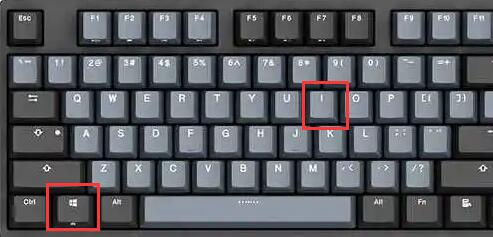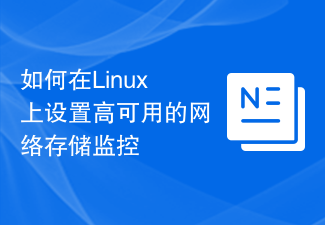 PHP Framework
PHP Framework Laravel
Laravel Laravel Development: How to monitor Laravel application using Laravel Telescope?
Laravel Development: How to monitor Laravel application using Laravel Telescope?Laravel is a popular PHP framework that provides many tools and libraries that enable developers to quickly develop high-quality web applications. One very useful tool is Laravel Telescope, which is an open source debugging tool that helps developers monitor their Laravel applications more easily. In this article, we will explain how to monitor Laravel applications using Laravel Telescope.
What is Laravel Telescope?
Laravel Telescope is an open source debugging tool from the Laravel community. It provides developers with a simple and easy-to-use web interface for monitoring various key components of Laravel applications, such as requests, queries, events, Queues, tasks, etc. Laravel Telescope is a very powerful and flexible tool that helps developers quickly locate and resolve issues in their applications.
Installing Laravel Telescope
Before we start using Laravel Telescope, we need to install it into our Laravel application. We can use the Composer package manager to install Laravel Telescope. In a terminal window, navigate to our Laravel application directory and run the following command:
composer require laravel/telescope
This will download and install the latest version of the Laravel Telescope package and add it to our project dependencies list.
Next, we need to register the Laravel Telescope service provider in our application so that it can be used. Open the config/app.php file, find the providers array, and add the following line at the end of it:
TelescopeTelescopeServiceProvider::class,
Save and close the file, then run it from the command line The following command to publish Laravel Telescope's assets and configuration files:
php artisan telescope:install
This will add the required Laravel Telescope configuration files, resource files, and database migration files to our application.
Finally, we need to run database migrations in order to create the required Telescope tables in our application. In a terminal window, run the following command:
php artisan migrate
Now we have successfully installed Laravel Telescope into our Laravel application and are ready to enable it on our application.
Enable Laravel Telescope
In order to enable Laravel Telescope, we need to register the Telescope route on our application's https://example.com/telescope route. In versions after Laravel 5.5, this can be done by adding the following line in the routes/web.php file:
Route::telescope();
After following the above steps, our application will You can use Laravel Telescope to monitor various key components. In the next section, we will detail some of the main features and usage of Laravel Telescope.
Use Laravel Telescope to monitor Laravel applications
Laravel Telescope provides many useful features that can help us monitor various key components of Laravel applications. The following are some tasks that can be accomplished using Laravel Telescope:
- Monitoring the requests and responses of the application
Laravel Telescope can help us monitor the HTTP requests and responses of the application. We can use it to view information such as response time, status code, request headers and response body of each request. In addition, Laravel Telescope can also help us view middleware and events between requests and responses.
- Monitoring the database operations of the application
Laravel Telescope can help us monitor the database operations of the application. We can use it to view information such as the SQL statement executed by the query, the bound parameters, and the execution time. In addition, Laravel Telescope can also help us view logs and exceptions generated by queries.
- Monitoring application queues and tasks
Laravel Telescope can help us monitor application queues and tasks. We can use it to view information such as the jobs executed by the queue, the status of the jobs, the data used in the jobs, and the time the jobs were executed. In addition, Laravel Telescope can also help us view logs and exceptions generated by jobs.
- Monitoring application events and listeners
Laravel Telescope can help us monitor application events and listeners. We can use it to view event triggering and listening details, including event name, listener class name, handler and execution time, etc. In addition, Laravel Telescope can also help us view logs and exceptions generated by events.
- Monitoring the cache and file system of the application
Laravel Telescope can help us monitor the cache and file system of the application. We can use it to view cache and file system status, usage, and performance. In addition, Laravel Telescope can also help us view logs and exceptions generated by the cache and file system.
Summarize
In this article, we introduced how to monitor Laravel applications using Laravel Telescope. We discussed some of the main features and uses of Laravel Telescope, including monitoring an application's requests and responses, database operations, queues and tasks, events and listeners, and caches and file systems. We also covered how to install and enable Laravel Telescope, and how to integrate it into our Laravel applications. Using Laravel Telescope can help us develop and maintain high-quality Laravel applications more easily.
The above is the detailed content of Laravel Development: How to monitor Laravel application using Laravel Telescope?. For more information, please follow other related articles on the PHP Chinese website!
 如何在FastAPI中实现请求日志记录和监控Jul 30, 2023 am 08:29 AM
如何在FastAPI中实现请求日志记录和监控Jul 30, 2023 am 08:29 AM如何在FastAPI中实现请求日志记录和监控引言:FastAPI是一个基于Python3.7+的高性能Web框架,它提供了许多强大的功能和特性,包括自动化的请求和响应模型验证、安全性、性能优化等。在实际开发中,我们经常需要在应用程序中记录请求日志以便进行排错和监控分析。本文将介绍如何在FastAPI中实现请求日志记录和监控,并提供相应的代码示例。一、安装依
 win10监控摄像头打开照片的方法Jul 10, 2023 pm 09:41 PM
win10监控摄像头打开照片的方法Jul 10, 2023 pm 09:41 PM如果我们手头没有手机,只有电脑,但我们必须拍照,我们可以使用电脑内置的监控摄像头拍照,那么如何打开win10监控摄像头,事实上,我们只需要下载一个相机应用程序。打开win10监控摄像头的具体方法。win10监控摄像头打开照片的方法:1.首先,盘快捷键Win+i打开设置。2.打开后,进入个人隐私设置。3.然后在相机手机权限下打开访问限制。4.打开后,您只需打开相机应用软件。(如果没有,可以去微软店下载一个)5.打开后,如果计算机内置监控摄像头或组装了外部监控摄像头,则可以拍照。(因为人们没有安装摄
 Linux下的实时日志监控与分析Jul 29, 2023 am 08:06 AM
Linux下的实时日志监控与分析Jul 29, 2023 am 08:06 AMLinux下的实时日志监控与分析在日常的系统管理和故障排查中,日志是一个非常重要的数据来源。通过对系统日志的实时监控和分析,我们可以及时发现异常情况并进行相应的处理。本文将介绍Linux下如何进行实时日志监控和分析,并提供相应的代码示例。一、实时日志监控在Linux下,最常用的日志系统是rsyslog。通过配置rsyslog,我们可以实现将不同应用程序的日志
 如何使用Golang实现Web应用程序监控Jun 24, 2023 am 09:00 AM
如何使用Golang实现Web应用程序监控Jun 24, 2023 am 09:00 AM在当今的互联网时代,Web应用程序的高效稳定运行是非常重要的。然而,应用程序可能会出现故障或崩溃,影响用户体验。为了确保应用程序的正常运行,我们需要对其进行监控。本文将探讨如何使用Golang实现Web应用程序监控。一、Golang的Web应用程序监控工具Golang拥有非常适合Web应用程序监控的工具。其中最流行的就是Prometheus。Promethe
 Nginx性能监控与安全分析辅助工具Jun 10, 2023 pm 02:41 PM
Nginx性能监控与安全分析辅助工具Jun 10, 2023 pm 02:41 PM随着互联网的发展,web应用程序的性能监控以及安全分析越来越受到重视。nginx作为一款高性能的Web服务器和反向代理工具,其在性能监控和安全分析方面也受到广泛的关注和应用。本文将介绍一些Nginx性能监控和安全分析的辅助工具。Nginx性能监控工具NginxAmplifyNginxAmplify是Nginx公司推出的一款性能监控工具。该工具可以
 Nginx监控实时状态配置,实时查看网站运行Jul 04, 2023 pm 05:18 PM
Nginx监控实时状态配置,实时查看网站运行Jul 04, 2023 pm 05:18 PMNginx监控实时状态配置,实时查看网站运行引言:Nginx是一款非常流行的反向代理服务器,其高性能和高并发能力使得它成为了许多网站的首选。为了保证网站的稳定运行,我们需要时刻监控Nginx的运行状态。本篇文章将介绍如何配置Nginx实时状态监控,并通过示例代码来让读者更好地理解。一、安装Nginx状态监控模块要实现Nginx的实时状态监控,需要在Nginx
 基于go-zero实现微服务调用链监控Jun 23, 2023 am 09:53 AM
基于go-zero实现微服务调用链监控Jun 23, 2023 am 09:53 AM随着微服务架构的广泛应用,调用链监控已经成为了保障微服务健康运行的重要手段。而基于go-zero框架实现微服务调用链监控,则是更加高效可靠的实现方式。一、调用链监控的基本概念微服务架构中,一个请求可能经过多个微服务组件的调用,这些调用形成了一条调用链。而一旦某一个环节出现问题,整个服务甚至整个系统都有可能受到影响。因此,调用链监控这个技术,就是通过记录整条调
 如何在Linux上设置高可用的网络存储监控Jul 07, 2023 pm 12:07 PM
如何在Linux上设置高可用的网络存储监控Jul 07, 2023 pm 12:07 PM如何在Linux上设置高可用的网络存储监控在现代的IT环境中,网络存储是一个关键组件,用于存储和管理海量的数据。为了确保数据的可靠性和高可用性,对网络存储的监控和故障恢复是非常重要的。本文将介绍如何在Linux上设置高可用的网络存储监控,并提供代码示例。第一步:安装监控工具在Linux上,我们可以使用一个开源的监控工具来监控网络存储,比如Nagios。首先,


Hot AI Tools

Undresser.AI Undress
AI-powered app for creating realistic nude photos

AI Clothes Remover
Online AI tool for removing clothes from photos.

Undress AI Tool
Undress images for free

Clothoff.io
AI clothes remover

AI Hentai Generator
Generate AI Hentai for free.

Hot Article

Hot Tools

SAP NetWeaver Server Adapter for Eclipse
Integrate Eclipse with SAP NetWeaver application server.

Dreamweaver Mac version
Visual web development tools

ZendStudio 13.5.1 Mac
Powerful PHP integrated development environment

Atom editor mac version download
The most popular open source editor

SublimeText3 Linux new version
SublimeText3 Linux latest version





